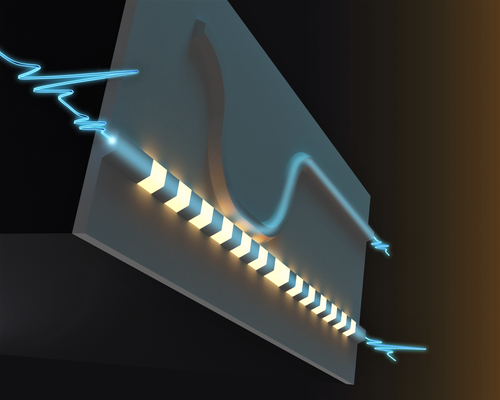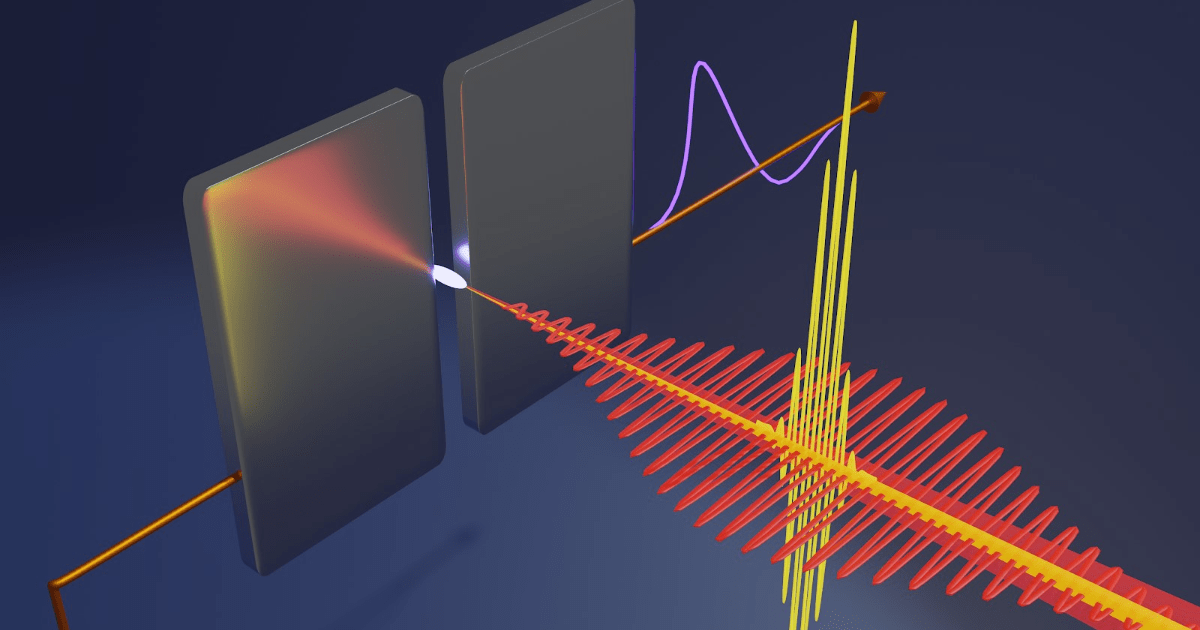创新背景
通过使用光脉冲而不是电信号,光学设备能够比电气设备更快地传输信号。这就是为什么现代设备经常使用光学器件来发送数据的原因。例如,光纤电缆能够提供比传统以太网电缆更快的互联网速度。
光学领域有可能以更快的速度和更低的功耗做更多的事情,从而彻底改变计算。然而,目前基于光学的系统的主要局限性之一是,在某一点上,它们仍然需要具有基于电子的晶体管来有效地处理数据。
创新过程
利用光学非线性的力量,加州理工学院的研究团队创造了一种全光开关。这种开关最终可以使用光子进行数据处理。
交换机是计算机最简单的组件之一。信号进入开关,根据某些条件,开关允许信号向前移动或停止。这种开/关属性是逻辑门和二进制计算的基础,也是数字晶体管的设计目的。然而,在这项新工作之前,用光实现相同的功能已被证明是困难的。与晶体管中的电子不同,晶体管中的电子可以强烈地影响彼此的流动,从而导致“切换”,光子通常不容易相互作用。

研究团队从两个方面进行了创新:一是使用的材料,二是他们使用它的方式。首先,他们选择了一种称为铌酸锂的晶体材料,这是铌,锂和氧的组合,在自然界中不会产生,但在过去的50年中,已被证明对光学领域至关重要。这种材料本质上是非线性的:由于原子在晶体中的排列方式特殊,它作为输出产生的光信号与输入信号不成比例。
虽然铌酸锂晶体已经在光学中使用了几十年,但纳米加工技术的进步使研究人员能够创造出基于铌酸锂的集成光子器件,从而允许在狭小的空间内限制光。空间越小,功率相同时光的强度就越大。因此,通过这种光学系统携带信息的光脉冲可以提供比其他方式更强的非线性响应。

其次,研究人员暂时限制了光线。从本质上讲,它们减少了光脉冲的持续时间,并使用了一种特定的设计,当脉冲在器件中传播时,该设计将使脉冲保持较短,从而导致每个脉冲具有更高的峰值功率。
这两种策略的综合效应造成了光的时空限制,进而增强给定脉冲能量的非线性强度,这意味着光子现在相互影响更强烈。
最终结果是创建了一个非线性分路器,其中光脉冲根据其能量被路由到两个不同的输出,这使得切换能够在不到50飞秒的时间内发生(飞秒是千万亿分之一秒)。相比之下,最先进的电子开关需要数十皮秒(皮秒是万亿分之一秒),相差许多数量级。
创新关键点
研究团队从两个方面进行了创新:一是使用的材料,二是他们使用它的方式。首先,他们选择了一种称为铌酸锂的晶体材料,其次,研究人员暂时限制了光线。
创新价值
这项研究创建了一个非线性分路器,其中光脉冲根据其能量被路由到两个不同的输出,这使得切换能够在不到50飞秒的时间内发生(飞秒是千万亿分之一秒)。相比之下,最先进的电子开关需要数十皮秒(皮秒是万亿分之一秒),相差许多数量级。这一发展可以帮助实现超快全光信号处理和计算。
The new optical switch can realize efficient and rapid all-optical signal processing
Using the power of optical nonlinearity (more on that later), the Caltech research team has created an all-optical switch. The switch could eventually use photons for data processing.
A switch is one of the simplest components of a computer. The signal enters a switch which, depending on certain conditions, allows the signal to move forward or stop. This on/off property is the basis of logic gates and binary computing, and is what digital transistors are designed for. Before this new work, however, achieving the same functionality with light had proven difficult. Unlike electrons in transistors, which can strongly influence the flow of each other, resulting in "switching", photons do not usually interact easily.
The research team innovated in two ways: the material used, and the way they used it. First, they chose a crystalline material called lithium niobate, a combination of niobium, lithium and oxygen that does not occur in nature but has proved crucial to the field of optics over the past 50 years. The material is nonlinear in nature: because of the way the atoms are arranged in the crystal, the optical signal it produces as an output is not proportional to the input.
While lithium niobate crystals have been used in optics for decades, advances in nanomechanical technology have allowed researchers to create integrated photonic devices based on lithium niobate, allowing light to be confined in tight Spaces. The smaller the space, the more intense the time of the same power. Thus, light pulses carrying information through such optical systems can provide stronger nonlinear responses than otherwise.
Second, the researchers temporarily limited the light. Essentially, they reduce the duration of the light pulses and use a specific design that will keep the pulses short as they propagate through the device, resulting in higher peak power per pulse.
The combined effect of these two strategies creates a space-time constraint on light, which in turn enhances the nonlinear intensity of a given pulse energy, meaning that photons now affect each other more strongly.
The end result is the creation of a nonlinear splitter in which light pulses are routed to two different outputs based on their energy, which enables switching to occur in less than 50 femtoseconds (a millionth of a millionth of a second). By comparison, the most advanced electronic switches take tens of picoseconds (a trillionth of a second), many orders of magnitude less.